- Home
- About Us
- Products
-
Heat-Pump Dehumidifier DeAir
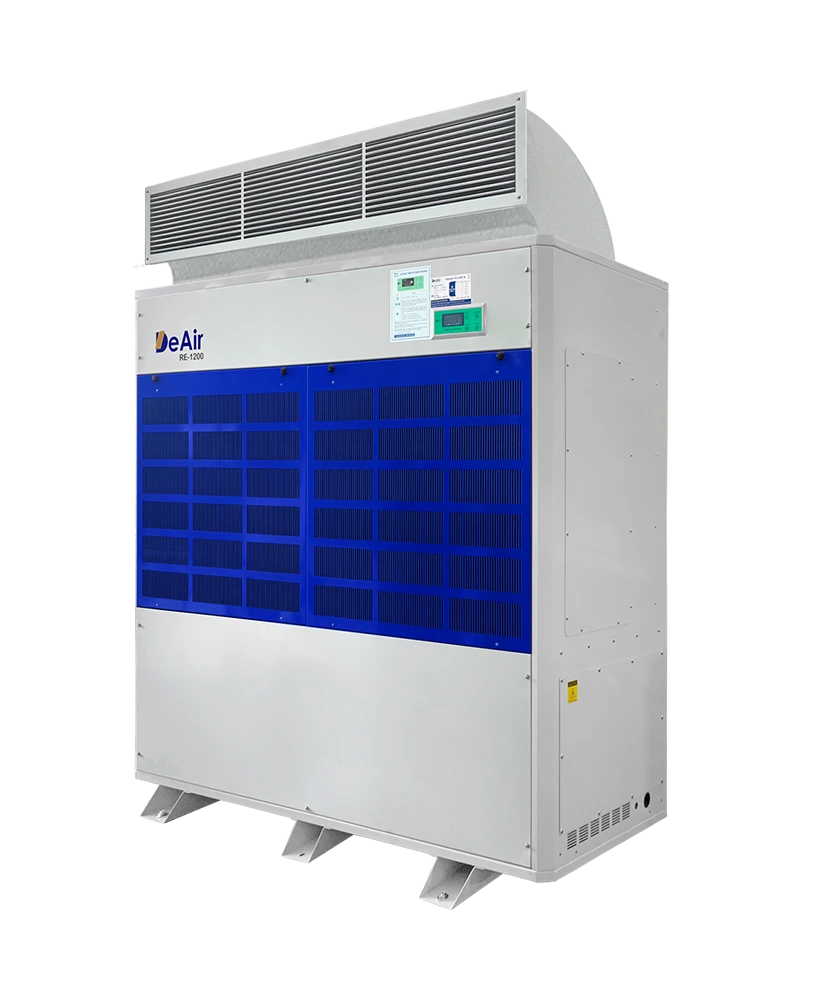 DeAir.RE
DeAir.RE -
Heat-Pump Dryer DeAir.RE-H
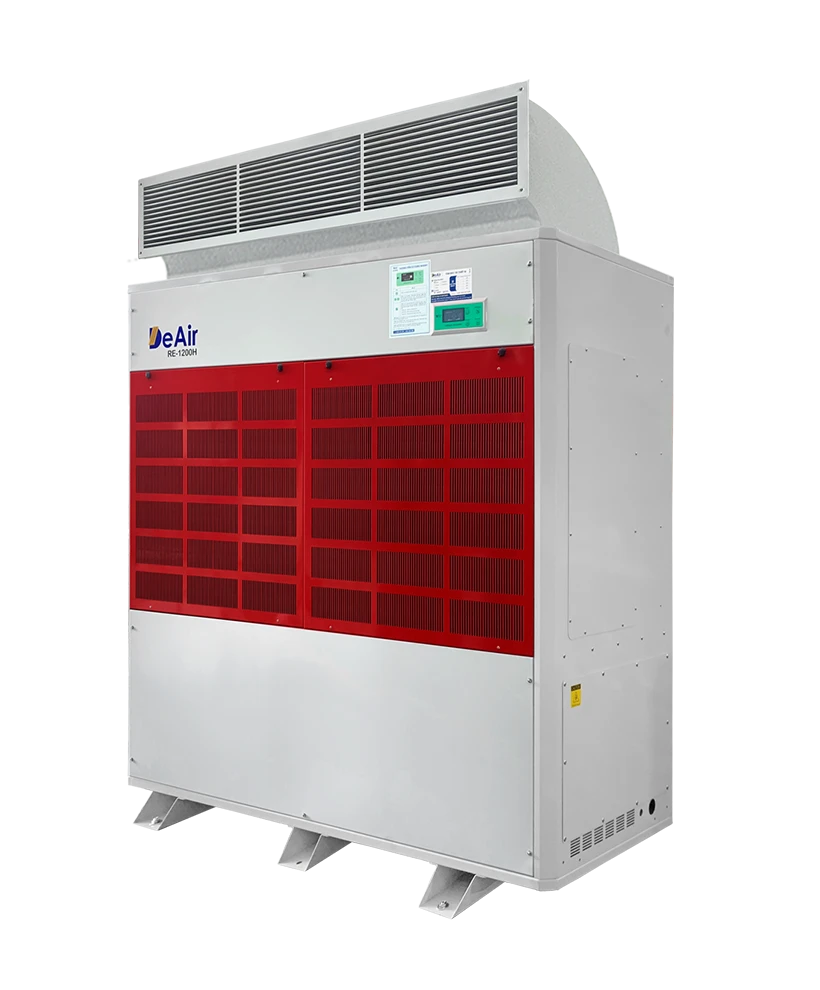 DeAir.RE-H
DeAir.RE-H -
Heat-Pump Stainless Steel Dehumidifier
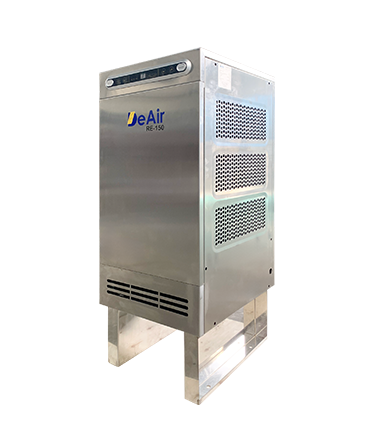 DeAir.RE-INOX
DeAir.RE-INOX -
Heat-Pump Isothermal Dehumidifier DeAir.CRE
 DeAir.CRE
DeAir.CRE -
Dezenno Dehumidifier
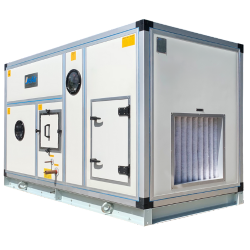 Dezenno
Dezenno -
Heat-Pump Ceiling Mounted Dehumidifier DeAir
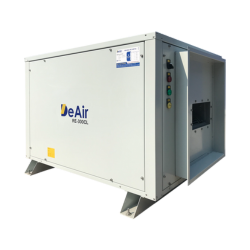 DeAir.RE-CL
DeAir.RE-CL -
Dehumidifier Olmas
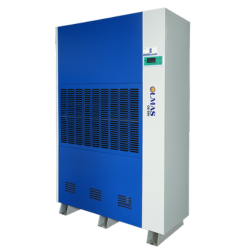 Olmas-OS
Olmas-OS -
Industrial Humidifier DeAir
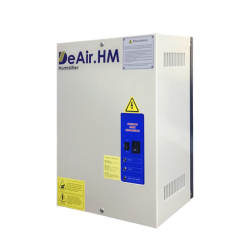 DeAir.HM
DeAir.HM -
Heat-Pump Dryer Daxwell
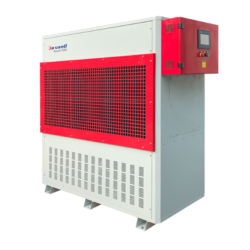 Daxwell
Daxwell -
Electric Duct Heater DeAir
 DeAir.Heat
DeAir.Heat -
Air Handling Unit Dezenno.MAX
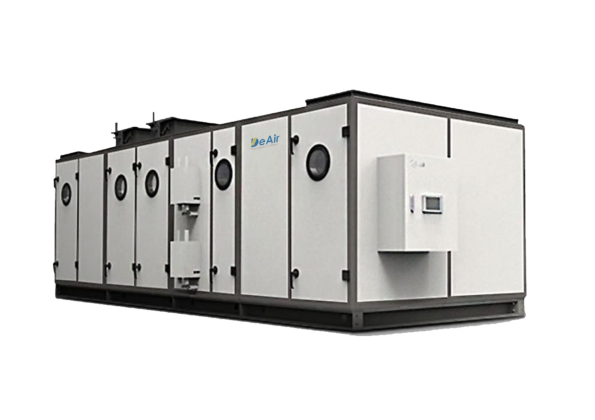 AHU
AHU
-
- Services
- Projects
- Warranty – Maintenance
- News
- Contact
Industrial Dehumidifier for Food: Effective Preservation and Drying
22/05/2025
Dehumidifiers for the Food Industry: Optimal Solutions from DeAir
In the food industry, humidity control plays a crucial role, directly affecting food quality, safety, and economic efficiency. Inappropriate humidity can cause serious problems from production, processing, packaging to preservation. This article delves into the importance of using dehumidifiers for the food industry, and introduces modern industrial dehumidifier and food dehydrator solutions from DeAir - a reputable company in Vietnam, helping businesses optimize processes and preserve products.

Using dehumidifiers for the food industry brings many practical benefits, including:
- Extending shelf life: Preventing the growth of harmful microorganisms.
- Enhancing product quality: Maintaining texture, flavor, color, and nutritional value.
- Optimizing production: Increasing productivity and reducing waste.
- Protecting equipment: Preventing rust and corrosion.
Why Is Humidity Control Important in the Food Industry?
Humidity exists as water vapor in food and the surrounding air. This water content, especially the amount of "free water" (unbound water), directly affects the "water activity" (aw) of the product. Water activity is an index describing the energy state of water, its ability to act as a solvent and participate in chemical/biochemical reactions. This is an indispensable indicator in the preservation of food and pharmaceuticals.
Humidity control helps address many core issues:
- Food Safety and Hygiene: High humidity creates an ideal environment for the growth of harmful microorganisms such as mold, bacteria, and yeast. This reduces shelf life and increases the risk of poisoning. If water activity is high, free water is high, creating favorable conditions for microorganisms to grow. Conversely, lower water activity means less water available for microorganisms to develop.
- Product Quality: Inappropriate humidity changes the texture (such as loss of crispness, becoming soggy, clumping, leaching), flavor, color, and nutritional value of food. For dried food, lower humidity helps preserve flavor, color, and nutrition better. Water activity also affects biochemical reactions such as fat oxidation, vitamin, protein, starch degradation, and non-enzymatic browning. It also affects physical properties such as softness, chewiness, succulence, or dryness, hardness, and flexibility of the product, and influences the flowability and caking of grains and powders.
- Production Efficiency: Controlled humidity optimizes production processes such as food drying, preservation, and packaging, thereby increasing productivity and minimizing waste. Excessively dry humidity can cause static discharge, while excessive humidity can clog machinery.
- Equipment and Facility Protection: High humidity can cause rust and corrosion of equipment and machinery in factories and warehouses, reducing lifespan and causing failures. Condensation on cooling equipment is also a problem that needs to be eliminated.
International and national standards such as ISO, AOAC... set allowable humidity thresholds for food products. Rapid and reliable determination of humidity allows for timely intervention during production, avoiding interruptions. For example, the ISO 22000 standard on food safety management systems requires humidity control to ensure product safety...
Industrial Dehumidifier Solutions for the Food Industry from DeAir
To meet the stringent humidity control needs in the food industry, DeAir offers a variety of industrial dehumidifiers with modern technology. DeAir is a reputable company specializing in the production of dehumidifiers, AHUs, and HVAC equipment in Vietnam.
DeAir Heat-Pump Dehumidifier
Heat-Pump dehumidifiers are an advanced solution, favored for their high energy efficiency and stable operation. This technology combines the principle of moisture condensation with the heat pump cycle.
Operating principle: Humid air is drawn into the machine, passing through the evaporator where moisture condenses into water. The refrigerant is then compressed and passes through the condenser. A key feature is that the heat released at the condenser is used to reheat the dehumidified air, before blowing it back into the space. This cycle continuously reuses heat.
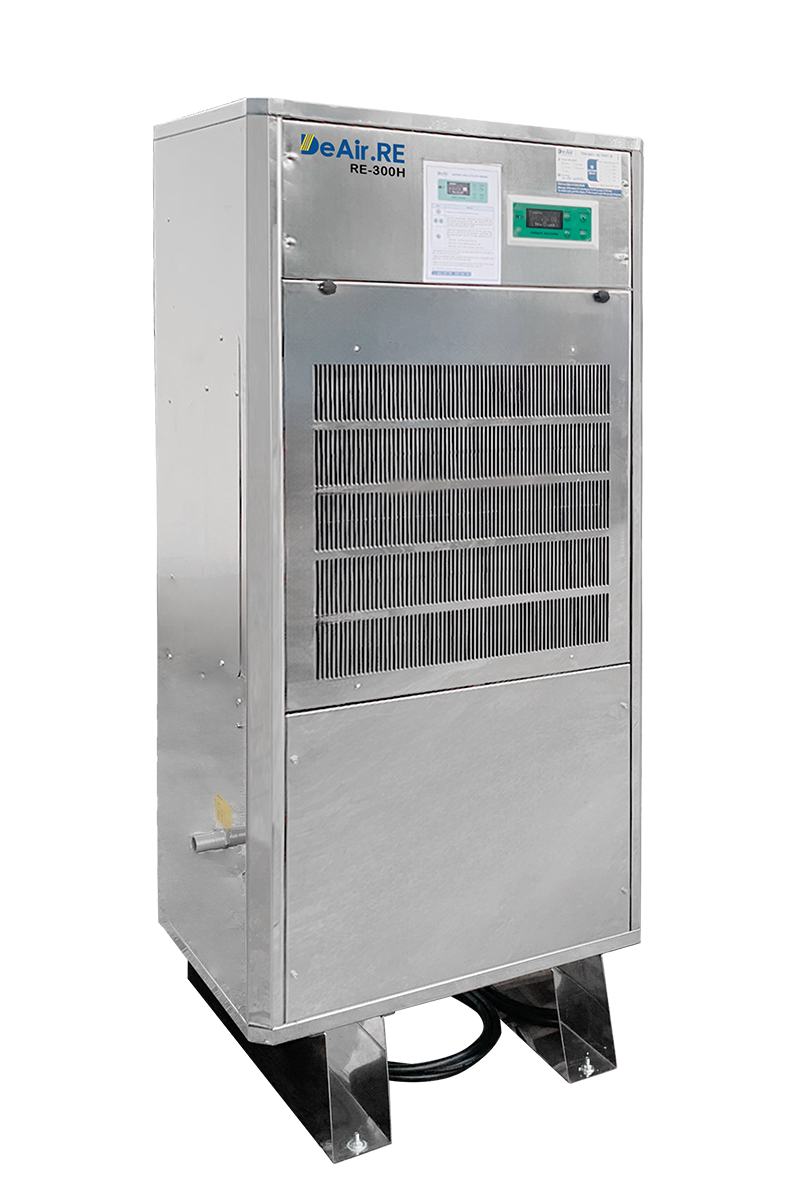
Advantages:
- Superior energy saving: Consumes significantly less electricity than traditional refrigerated condensation dehumidifiers to remove the same amount of moisture, thanks to waste heat utilization. The Coefficient of Performance (COP) is often higher.
- Temperature stability: The dehumidified air is reheated, helping to stabilize the space temperature and avoid uncomfortable cold air blowing.
- Effective operation at lower temperatures: Maintains good performance even in low-temperature environments.
- Deeper dehumidification capability: Can achieve lower relative humidity under certain conditions.
- Uses R410A refrigerant with zero Ozone Depletion Potential (ODP).
Applications in the food industry: Suitable for maintaining stable humidity in food storage warehouses, reducing operating costs. Controls humidity in processing rooms, creating a more comfortable working environment. For example, DeAir Heat-Pump dehumidifiers are used to preserve fresh fruits and vegetables, preventing spoilage.
DeAir offers many different Heat-Pump dehumidifier models such as DeAir.RE, DeAir.RE-H, DeAir.RE-INOX (with stainless steel casing, suitable for harsh environments), DeAir.CRE Constant Temperature Dehumidifier (controls both temperature and humidity), and DeAir.RE-CL Ceiling-Mounted Dehumidifier (saves space). The DeAir.RE-300 model has a power consumption of only 4.6kW for a dehumidification capacity of 300 liters/day, demonstrating impressive energy-saving capabilities.
Dezenno Rotor Dehumidifier
When humidity control requirements demand extremely low and stable humidity, especially effective in high humidity and low-temperature environments, the Dezenno Rotor Dehumidifier is the ideal choice.
Operating principle: Uses an adsorbent (usually Silica gel) on a rotor to absorb moisture from the air. A portion of the rotor is heated to regenerate the adsorbent, releasing moisture to the outside.
Advantages:
- Operates effectively at low temperatures, even below 0°C.
- Precise humidity control at very low levels, even below 40% RH.
Applications in the food industry: Ideal for dehumidifying foods requiring high dryness such as powdered spices, powdered functional foods. Prevents frost formation in cold storage, helping to optimize product preservation. Ensures extremely low humidity in packaging rooms for hygroscopic products to maintain quality after packaging. For example, the Dezenno Rotor Dehumidifier is used to dehumidify chili powder and turmeric powder, preserving their color and flavor.

Dezenno.MAX AHU Air Handling Unit
The Dezenno.MAX central air handling unit (AHU) provides a comprehensive environmental control solution.
Function: Dezenno.MAX AHU not only controls temperature and filters air but can also integrate dehumidification options (using condensation or rotor technology).
Applications in the food industry: This is a comprehensive solution for areas requiring strict environmental control, such as clean rooms in food production (e.g., functional foods, baby food) and large-scale processing areas needing simultaneous control of multiple air factors.
DeAir Heat-Pump Dehydrators for the Food Industry
In the food industry, especially in the processing of dried agricultural products, pharmaceuticals, and seafood, the need is not only to control air humidity but also to remove moisture from the product itself. DeAir's Heat-Pump dehydrators are an advanced solution for this need, utilizing the heat pump principle to dry food efficiently and save energy.
DeAir's Heat-Pump dehydrators come in two main lines: DeAir.Re-H and Daxwell.
DeAir.Re-H Heat-Pump Dehydrator
Features: Initially a heat-resistant dehumidifier, later equipped with heat pump technology for more durable and energy-efficient operation. Notable for its heat resistance, some models have an operating temperature of up to 60°C.
Control system: This line does not have a PLC/HMI control cabinet.
Applications: Commonly used for humidity control in high-temperature environments or drying products that do not require complex drying process control. For example, the DeAir.Re-H Heat-Pump dehydrator is used for drying wood and herbs.

Daxwell Heat-Pump Dehydrator
Features: This industrial dehydrator line has a control cabinet and is manufactured by DeAir in accordance with international technical standards.
Intelligent control system (PLC/HMI): This is the outstanding advantage of the Daxwell line.
- Precise control: PLC allows programming of drying parameters (temperature, humidity, time) according to each type of material, ensuring uniform product quality.
- Visual monitoring: The HMI screen provides a visual interface, making it easy to monitor operating parameters in real-time and make quick adjustments.
- Performance optimization: PLC controls and coordinates components (compressor, fans, valves) for the system to operate at the highest efficiency, maximizing energy savings.
- Greater stability and reliability: Thanks to precise control.
- Automation: Expands the ability to automate the production process.
Diverse temperature range: Offers many models with different temperature ranges, meeting diverse drying needs.
- D series: 40°C - 60°C (suitable for drying heat-sensitive products).
- M series: 50°C - 80°C (requires higher temperatures).
- S series: 25°C - 80°C (widest range, including cold drying).
Applications: Widely used in processing agricultural products (rice, corn, coffee, pepper, vegetables), food (dried fruit, confectionery), pharmaceuticals (herbs), and seafood (fish, shrimp, squid). Ability to customize the drying cycle to suit the specific characteristics of each material. For example, the Daxwell Heat-Pump dehydrator is used to dry mangoes, jackfruit, bananas, dried fish, and dried squid.

Compared to traditional dehydrators (direct heat generation, high heat loss) and condensing dehydrators, Heat Pump dehydrators save significantly more energy (up to 70%) and have better control over temperature and humidity, helping to preserve product quality. The initial investment cost may be higher, but the long-term operating costs are lower.
Considerations When Choosing Dehumidifier/Dehydrator for the Food Industry
Choosing the right type of dehumidifier or dehydrator should be based on several factors:
- Product type: Different requirements for humidity and drying temperature. For example, dried products have specific humidity standards (e.g., dried mangoes need humidity below 18%).
- Production scale and space area: Choose a machine with appropriate capacity. Large capacity dehumidifiers are usually from several tens of liters/day or more, unlike household dehumidifiers.
- Control requirements: If strict control of drying parameters is needed, a machine with PLC/HMI like the Daxwell line is optimal.
- Budget: Consider the balance between initial investment and long-term energy savings.
- Operating environment: Highly corrosive environments require stainless steel casing (like the DeAir.RE-INOX line).
- Supplier: Choose a reputable, experienced supplier with good technical support services. DeAir prides itself on its team of experienced and dedicated experts in the field of humidity control.
DeAir is ready to advise and provide optimal solutions for the specific needs of businesses in the food industry.
Conclusion: DeAir Industrial Dehumidifiers - Reliable Solutions for the Food Industry
Humidity control is a top priority in the food industry. DeAir's dehumidifiers and dehydrators provide comprehensive solutions, from controlling air humidity to removing moisture from products, helping businesses improve food quality and safety, optimize production, and save costs.
For advice and to choose the most suitable equipment for your needs, contact DeAir today. We are always ready to assist you!
Contact Information
- Hotline: 0925 977 579
- Email: deair@deair.com.vn
- Office & Factory: 442/8 National Highway 1A, An Phu Dong Ward, District 12, Ho Chi Minh City
Sign up for news from DeAir
Related news






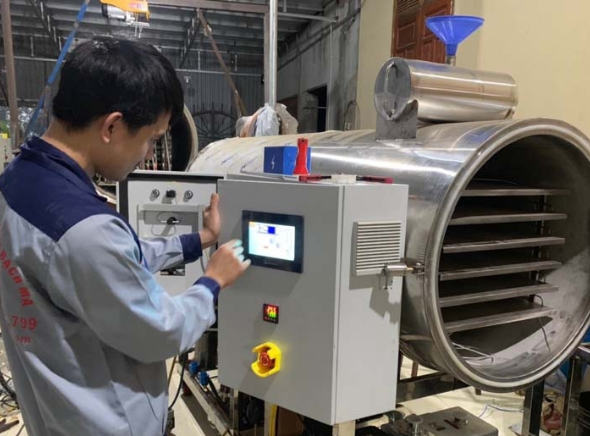



![[Case Study] DeAir Installs DeAir.De Rotor Humidity Control System for Pharmaceutical Plant in Binh Duong [Case Study] DeAir Installs DeAir.De Rotor Humidity Control System for Pharmaceutical Plant in Binh Duong](https://deair.com.vn/thumbs/news/2023_04/ban_giao_may_cho_duoc_bd/[270x153-cr]image1-1024x772.jpg__cv.webp)

![[Review & Guide] Olmas OS-300: The New Humidity Control "Warrior" for Medium to Large Warehouses [Review & Guide] Olmas OS-300: The New Humidity Control "Warrior" for Medium to Large Warehouses](https://deair.com.vn/thumbs/news/huong_dan_su_dung_may_olmas_21/[270x153-cr]vtm06440.png)